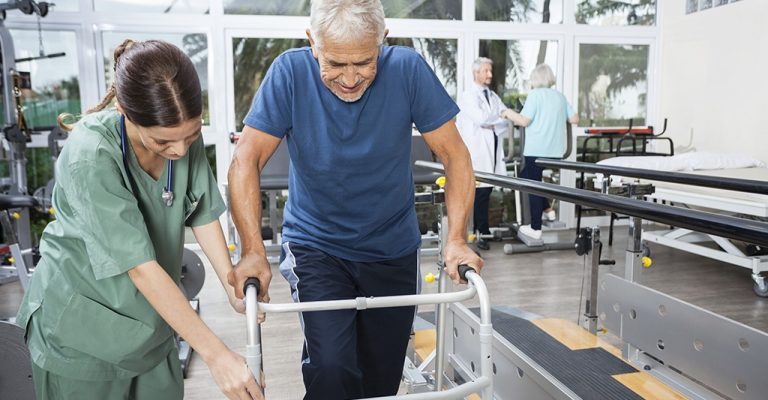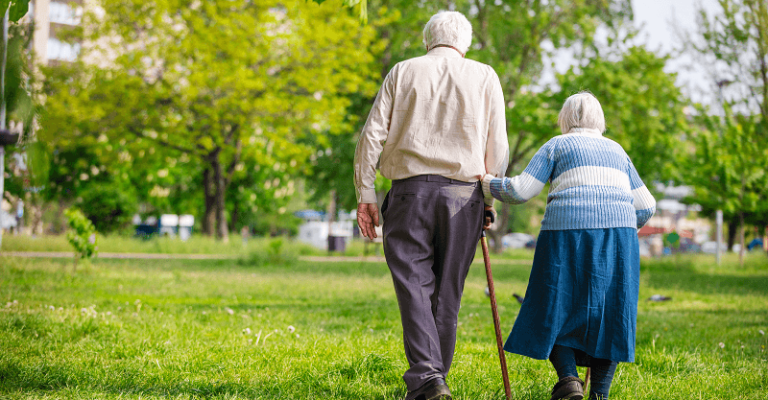
Walking after a stroke is often one of recovery’s most difficult and crucial obstacles. The ability to walk on your own improves your quality of life and raises your body’s chances of recovery.
Several exercises, medicinal treatments, and even surgical techniques are available to aid in the reintegration of mobility into everyday life, particularly when the various components of recovery are considered.
Stroke is the biggest cause of disability in the United States. It happens when the blood flow to the brain is disturbed, depriving brain cells of oxygen and causing brain tissue damage.
The secondary consequences of a stroke vary widely depending on which parts of the brain are damaged. Cognitive capabilities, motor abilities, feeling, vision, communication, and personality may all be affected when your gait may suffer when your gross motor skills (big movements of the torso, leg, and/or arm) are impaired due to a stroke.
Motor difficulties after a stroke often affect just one side of the body, which may lead to balance issues that further disturb your gait. This is because each brain hemisphere regulates movement on the opposite side of the body, and strokes often damage just one hemisphere rather than both. (However, it is conceivable to have several strokes on both sides of the brain.)
As a result, a right-hemisphere stroke may impair movement on the left side of the body, while a left-hemisphere stroke may impair movement on the right side. As a result, hemiparesis and hemiplegia, which impair mobility on one side of the body, are typical sequel symptoms after a stroke.
Hemiplegia (the weakness or paralysis of one side of the body) and other frequent neurological abnormalities that occur after a stroke, such as loss of balance, weaker muscles, reduced spatial awareness, and poor general physical coordination, may make rehabilitation very difficult. As a result, many survivors need the aid of a loved one, caregiver, or appropriate tools and support networks until these imbalances are corrected.

Rehabilitation is essential for restoring walking after a stroke. It stimulates the brain via different physical therapy exercises and activities. Because they are highly educated in assisting patients in regaining mobility, physical therapists are an important resource for gait rehabilitation.
Following a stroke, patients are usually sent to an inpatient rehabilitation clinic, where they receive many hours of one or more forms of treatment every day. During physical therapy, your therapist will lead you through various exercises and activities to regain mobility and coordination, strengthen muscles, and retrain the brain.
The same principle holds for gait rehabilitation: practice makes perfect. Relearning to walk after a stroke requires a lot of practice. You may help rewire your brain and improve your gait by doing physical therapy activities regularly.
But what if you can’t normally exercise due to hemiplegia or post-stroke paralysis? Passive exercise and therapy techniques may aid in this situation.
Passive exercise is helping your afflicted limbs through an activity, either by utilizing your non-affected side or with the assistance of a qualified caretaker or therapist. Although the exercise is done for you, it stimulates the brain and promotes neuroplasticity, particularly when you pay attention to it.
You help stimulate the brain and make beneficial changes every time you move your afflicted side via therapeutic motions and bring this movement into your consciousness. Results will be gradual; you may notice muscular twitches at first when your movement skills recover; this is a sign of progress.
Physical therapy activities are the most effective technique to improve your gait after a stroke. Based on your skill level, your physical therapist may propose some suitable exercises for you.
Here are some examples of gait training activities that your PT could offer to help you improve your walking ability:
To increase flexibility, gently draw your toes downward, allowing the knuckles to lift as you bend. To help, lightly push your thumb into the arch of your foot. You may experience some soreness in the foot arch as the muscles strive to develop, but keeping the posture for 20 to 30 seconds is critical. Once this section of the exercise is finished, reverse the direction of the toe stretch to help in joint re-straightening.
Place 20 marbles or tiny round items on the floor beside a bowl or container while sitting in a comfortable chair. Lift one marble at a time with your toes and put it in a basin. Change the bowl’s position for an extra challenge to increase strength and flexibility.

Take a tall, solid standing stance and carefully transfer your weight to one side of your body until you’ve reached a steady location to secure your balance. Swing the non-supporting leg up to the side and balance for 10 seconds. Switch legs after a few reps and continue as long as your strength permits.
Foot drop is a post-stroke syndrome that makes it difficult to elevate the front of your foot, a movement known as dorsiflexion. This action is essential for walking safely and lowering the chance of tripping and falling.
Ankle dorsiflexion is a useful exercise for reducing foot drop. Cross your afflicted leg across your thigh and grasp your foot. Then, to help your foot dorsiflex, move the top of your foot back toward your shin and then back down.
When you can walk with help, you may begin task-specific training, which entails directly practicing the skill you wish to improve: walking! The more you walk, the more fluid your stride will become.
Try to walk as much as you can without overexerting yourself, being sure to utilize any equipment prescribed by your therapists, such as a walker or cane. Excessive exertion might result in additional issues, such as post-stroke tiredness. Exercise should make you feel challenged but not weary.
Most patients recover their ability to walk within 6 months after their stroke or within 2 years if their mobility is significantly impaired. Experts believe that the intensity of therapy increases the odds of regaining function after a stroke.
Regular therapy increases your chances of recovering your ability to walk after a stroke. Your therapist will take you through numerous exercises to improve your gait throughout inpatient and outpatient treatment.